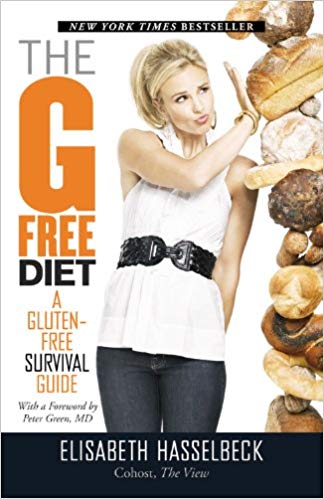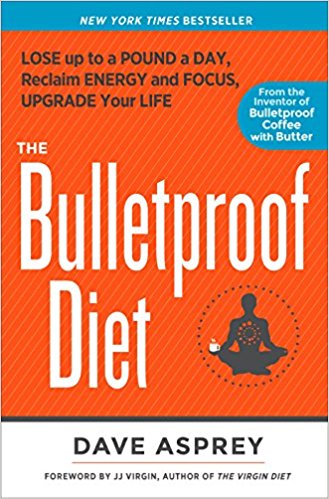
May 8, 2019 | Gluten Sensitivity/Celiac Disease Diets
The G-Free Diet is a dieting program created by Elisabeth Hasselbeck, best known for having been a co-host on The View for a while. This diet is gluten-free, which means that it does not involve eating any wheat, barley, rye or other gluten-containing grains. Traditionally, this type of diet is meant to ease celiac disease symptoms.
Celiac disease is a condition in which the small intestine is damaged by the immune system when the affected individual consumes gluten-containing food. While Hasselbeck was diagnosed with irritable bowel syndrome for many years by her doctors, she self-diagnosed with celiac disease. This was indeed later confirmed by a doctor.
The G-Free Diet Claim
As someone with celiac disease, it’s important for Hasselbeck not to eat gluten. Her response was to create The G-Free Diet, which provides tips for eating at home, at a party, or while dining out. She provides details for people to be able to avoid mistakenly eating gluten and offers ways to better understand food labels and other places where gluten may be hiding.
When following the instructions provided by The G-Free Diet, all gluten-containing foods are avoided, including certain oat-based products that have been processed in the same facility as wheat.
This includes foods that one wouldn’t expect to contain gluten, but that often do, such as soy sauce, many fried foods, beer and certain dairy alternatives. That said, options such as tequila, sake, wine and champagne are all typically gluten-free and are therefore permitted through The G-Free Diet.
Get a Diagnosis First
What is very important about The G-Free Diet is that it is meant for people with celiac disease. This is not a part of the gluten-free trend that many people have adopted regardless of whether or not they actually have an intolerance to gluten. In fact, preliminary research is indicating that gluten-free dieting is actually less healthy for individuals without an intolerance. Early studies have suggested that there could be a heart disease related risk for individuals following this type of eating strategy unnecessarily.
Therefore, reputable organizations such as the Mayo Clinic recommend that a individuals seek out a celiac disease diagnosis before starting a gluten-free diet. This can help to make sure that The G-Free Diet will be both safe and appropriate for their needs. Moreover, it also helps to rule out other potential underlying conditions that could be causing symptoms similar to those of celiac disease but that may be unrelated.

Jan 7, 2019 | Gluten Sensitivity/Celiac Disease Diets, Low Carb Diets, Paleo Diets
The Bulletproof Diet was created by Dave Asprey. Asprey is the founder of the Bulletproof company, which was launched in 2013. Briefly, his story says that he had been very unhealthy and then started following a diet very different from the traditional weight loss strategy. This included melting butter into his morning coffee, among other changes.
That said, Asprey claims that following his Bulletproof diet helped him to lose 100 pounds of fat, eliminated the signs of six chronic diseases – which were not identified – experienced increased energy and productivity and he even claims that his IQ spiked by 20 points. To be clear, aside from the weight (not necessarily fat) loss, none of the additional claims are verifiable. Therefore, it’s very important for dieters to take a much closer look at this diet and to talk to their doctors before starting this type of dieting.
The Bulletproof Diet Rules
There are ten rules someone is supposed to follow if they are using the Bulletproof Diet to lose weight. They are mainly a matter of eliminating certain foods because they are “toxic” according to Asprey.
- Cut out all sugar – This includes natural sweeteners like maple syrup and honey.
- Replace any sugars with healthy fats – Therefore, where you’d usually eat sugar, honey or maple syrup, you should include grass fed butter or any of the pricy branded Bulletproof fat products.
- Eliminate anything other than “clean” meats – Clean meats are grass fed meats and wild caught seafood. This will likely present a barrier to anyone whose grocery list is made on a budget.
- Eliminate grains and gluten – Asprey believes that gluten has “many negative effects”. That said, most doctors disagree, and some studies show that people who eliminate gluten when they do not have celiac disease or another specific tolerance have an increased risk of heart disease.
- Eliminate all artificial colorings, flavorings and other additives.
- Eliminate all legumes except for sprouted legumes – Sprouted legumes are permitted, but only if you must have them. They’re best cut out as well, according to the Bulletproof Diet.
- Eliminate all processed, pasteurized and homogenized dairy – Only full-fat raw dairy is permitted with the Bulletproof Diet. This will prove difficult for the millions of people living in areas where it is illegal to sell raw dairy to the consumer.
- Switch to organic fruits and veggies.
- Gently cook foods – Ideally, they should not be heated to more than 320ºF, should not be fried and should not be microwaved.
- Eat only 1 to 2 servings of fruit per day – Ideally, fruits should be low-sugar options. The Bulletproof diet recommends berries and lemons.
The Bulletproof Diet is typically considered to be a form of extreme dieting.


